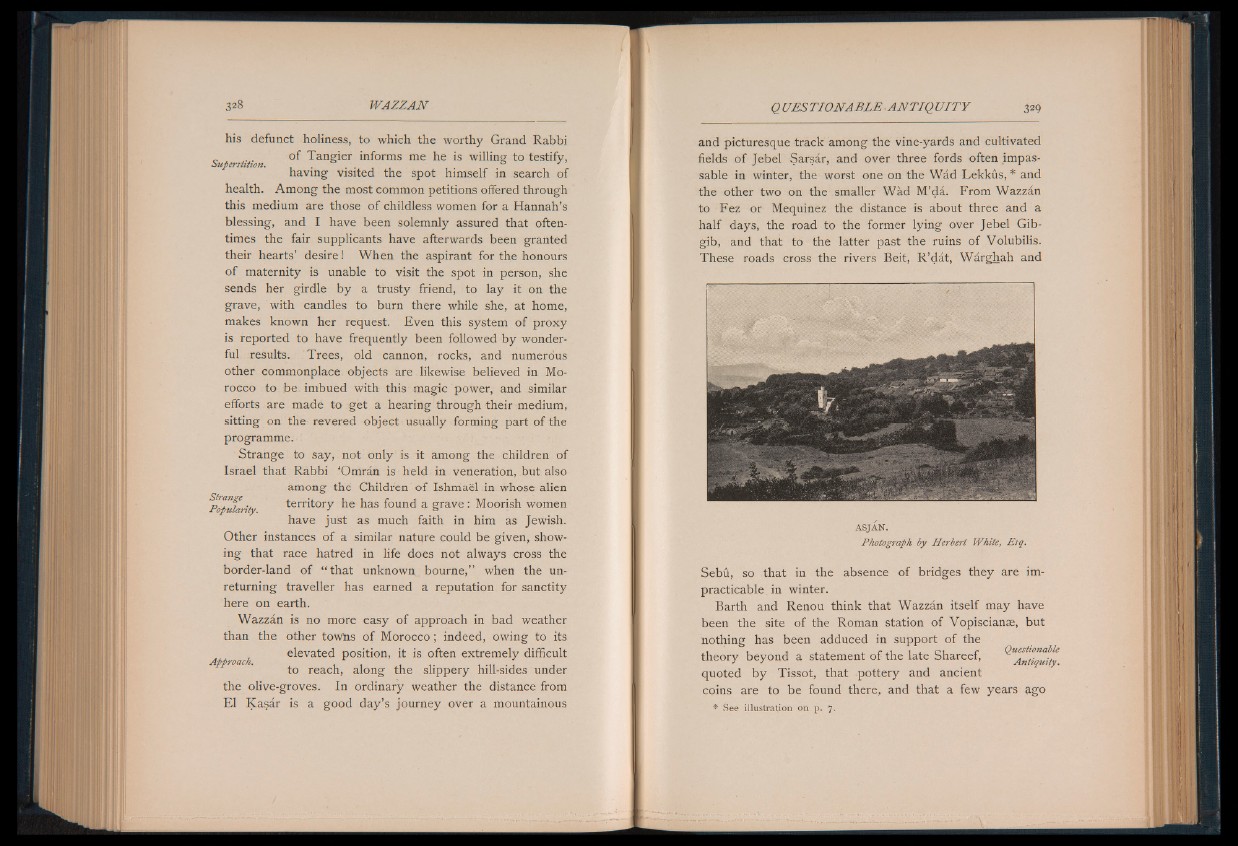
his defunct holiness, to which the worthy Grand Rabbi
of Tangier informs me he is willing to testify,
having visited the spot himself in search of
health. Among the most common petitions offered through
this medium are those of childless women for a Hannah’s
blessing, and I have been solemnly assured that oftentimes
the fair supplicants have afterwards been granted
their hearts’ desire! When the aspirant for the honours
of maternity is unable to visit the spot in person, she
sends her girdle by a trusty friend, to lay it on the
grave, with candles to burn there while she, at home,
makes known her request. Even this system of proxy
is reported to have frequently been followed by wonderful
results. Trees, old cannon, rocks, and numerous
other commonplace objects are likewise believed in Morocco
to be. imbued with this magic power, and similar
efforts are made to get a hearing through their medium,
sitting on the revered object usually forming part of the
programme.
Strange to say, not only is it among the children of
Israel that Rabbi ’Omran is held in veneration, but also
among the Children of Ishmael in whose alien
Popularit territory he has found a grave : Moorish women
have just as much faith in him as Jewish.
Other instances of a similar nature could be given, showing
that race hatred in life does not always cross the
border-land of “ that unknown bourne,” when the unreturning
traveller has earned a reputation for sanctity
here on earth.
Wazzan is no more easy of approach in bad weather
than the other towns of Morocco; indeed, owing to its
elevated position, it is often extremely difficult
Approach.
to reach, along the slippery hul-sides under
the olive-groves. In ordinary weather the distance from
El Kasar is a good day’s journey over a mountainous
and picturesque track among the vine-yards and cultivated
fields of Jebel Sarsar, and over three fords often impassable
in winter, the worst one on the Wad Lekkus, * and
the other two on the smaller Wad M’da. From Wazzan
to Fez or Mequinez the distance is about three and a
half days, the road to the former lying over Jebel Gib-
gib, and that to the latter past the ruins of Volubilis.
These roads cross the rivers Beit, R’dat, Warghah and
ASJAN.
Photograph by Herbert White, Esq.
Sebû, so that in the absence of bridges they are impracticable
in winter.
Barth and Renou think that Wazzán itself may have
been the site of the Roman station of Vopiscianæ, but
nothing has been adduced in support of the
theory beyond a statement of the late Shareef, ^Antiquity
quoted by Tissot, that pottery and ancient
coins are to be found there, and that a few years ago